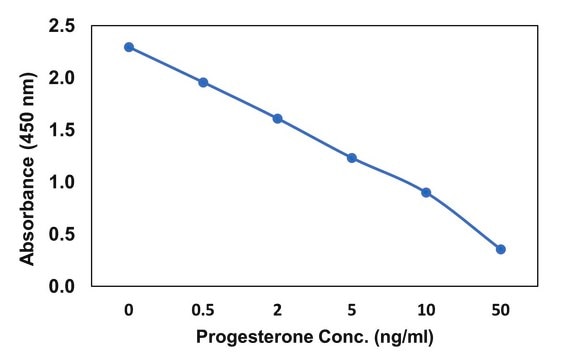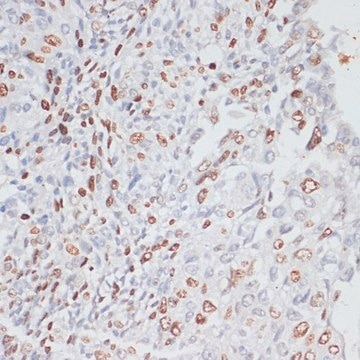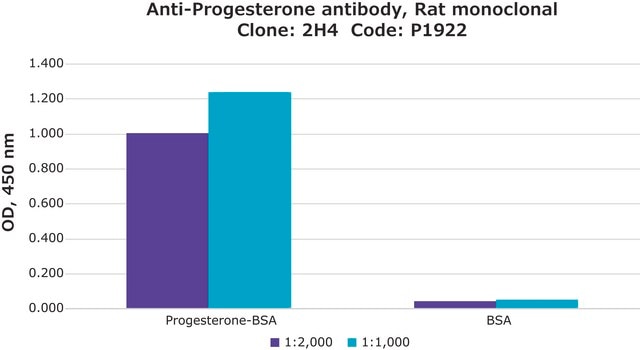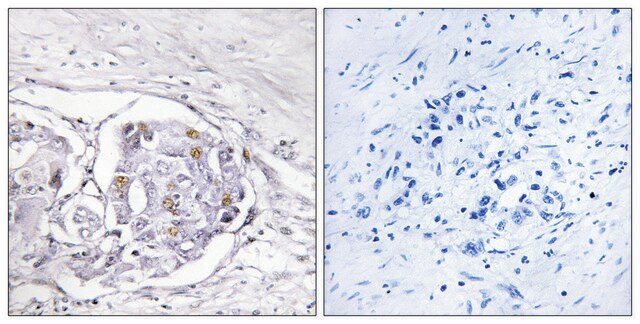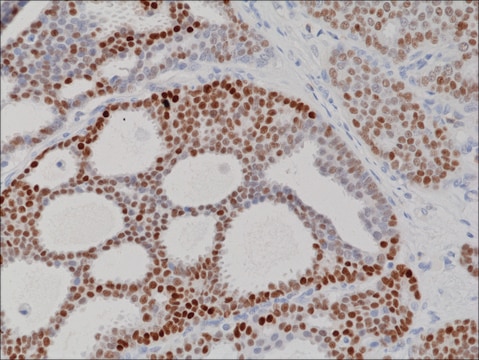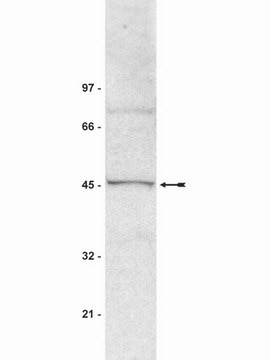SAB5500165
Anti-Progesterone Receptor antibody, Rabbit monoclonal
recombinant, expressed in proprietary host, clone SP2, tissue culture supernatant
About This Item
Recommended Products
biological source
rabbit
Quality Level
recombinant
expressed in proprietary host
conjugate
unconjugated
antibody form
tissue culture supernatant
antibody product type
primary antibodies
clone
SP2, monoclonal
species reactivity
human (tested)
species reactivity (predicted by homology)
bovine, rabbit, pig
technique(s)
immunohistochemistry: 1:400
isotype
IgG
UniProt accession no.
shipped in
wet ice
storage temp.
2-8°C
target post-translational modification
unmodified
Gene Information
human ... PGR(5241)
General description
Progesterone receptor (PGR) belongs to the steroid/thyroid hormone receptor family of ligand-activated transcription factors. It possesses the amino-terminal AF1 region, the central DNA-binding domain (DBD) and the carboxyl-terminal ligand- binding domain (LBD). The PGR gene is localized on human chromosome 11q22.1.
Immunogen
Biochem/physiol Actions
which modulates the transcription of target genes in response to progesterone and other hormones. It is phosphorylated on multiple sites and at times, the phosphorylation changes according to the hormone involved. During hormone unavailability, PGR is bound to heat shock proteins. When the ligand binds, it causes the release of PGR from heat shock proteins. It is then translocated to the nucleus, where it binds to its DNA response elements (SREs) and to the components of the transcription machinery. PGR also binds to chromatin templates and results in chromatin remodeling adjacent to the PGR-binding sites.
Features and Benefits
Physical form
Disclaimer
Not finding the right product?
Try our Product Selector Tool.
wgk_germany
WGK 2
flash_point_f
Not applicable
flash_point_c
Not applicable
Certificates of Analysis (COA)
Search for Certificates of Analysis (COA) by entering the products Lot/Batch Number. Lot and Batch Numbers can be found on a product’s label following the words ‘Lot’ or ‘Batch’.
Already Own This Product?
Find documentation for the products that you have recently purchased in the Document Library.
Our team of scientists has experience in all areas of research including Life Science, Material Science, Chemical Synthesis, Chromatography, Analytical and many others.
Contact Technical Service